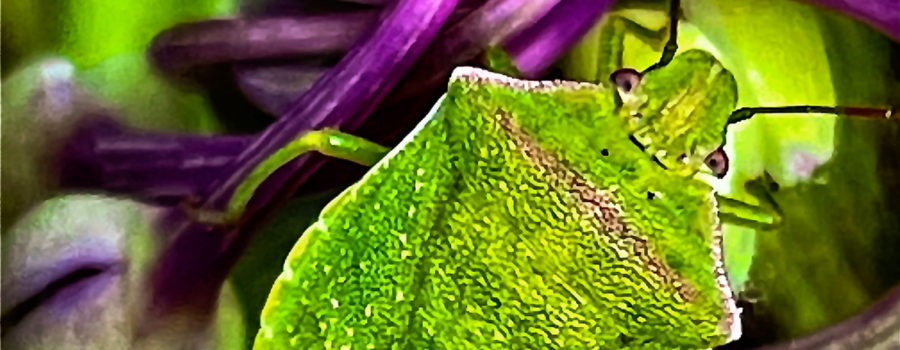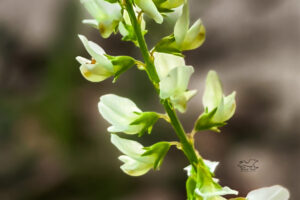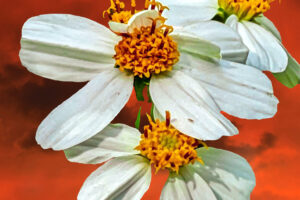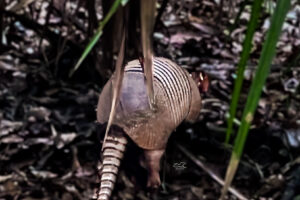The Beautiful Red Shouldered Stink Bug Can Damage Plants

One afternoon awhile back, I went out to one of our local retention ponds to release an aquatic turtle. While I was out there, I found all sorts of interesting things to photograph. One of them was a red shouldered stink bug (Thyanta custator) located on a spiderwort plant. I was really taken by the way the bug’s eyes and shoulder stripes matched the colors in the foliage. Stink bugs are well known for producing an unpleasant odor when aggravated. It works well to ward off predators, including many people. There are quite a few stink bugs in Florida, and some of them even look pretty similar to the red shouldered stink bug. The main distinguishing characteristics of this bug are it’s purplish red band across the upper back and similarly colored stripes along the shoulder edges. Usually adults of this species are lime green in color, but they may also be a lighter green or brown.

Red shouldered stink bugs begin to become active in the spring as the weather starts to warm up. Adults that overwintered in the leaf litter on the forest floor or mulch in the garden come out and begin to feed on early leaves and shoots of spring plants. Females lay their eggs along stems, on the undersides of leaves, and on plant branches. When the eggs hatch the dark brown or black nymphs are released and immediately begin feeding on the plants. The nymphs go through five instars, during which they get larger and develop their green color and red stripes. In the best conditions for reproduction, it takes a young red shouldered stink bug about 40 days to reach maturity, so there can be quite a few generations produced each year.

Red shouldered stink bugs originally came from the Caribbean, and have become naturalized to most of South and Central America, as well as the southern United States. Unfortunately, even though they are beautiful to look at, they can do significant damage to several types of crop plants including legumes (especially soybeans in South America), corn, tomatoes, wheat, peaches, and almonds. They can also be notable garden pests. These insects feed by piercing the skin of the plant and drinking the juices. These spots then become areas of damage on the plant or the fruit. The pierced spots also can allow bacteria or fungal organisms to enter the plant and cause even more damage.

The plants around where this bug was living all seemed to be pretty healthy, and most of the time, the damage that they cause, even to crops or gardens, is minimal, but like anything else, if the population gets too large, it becomes problematic. For my part, it’s my goal to observe and document nature, and appreciate it’s beauty. I leave nature alone to do it’s own thing whenever possible. I try to leave my footprints in the dirt only, and nowhere else. It’s up to someone else to decide if a plant or animal is good, bad, or indifferent.





Recent Comments